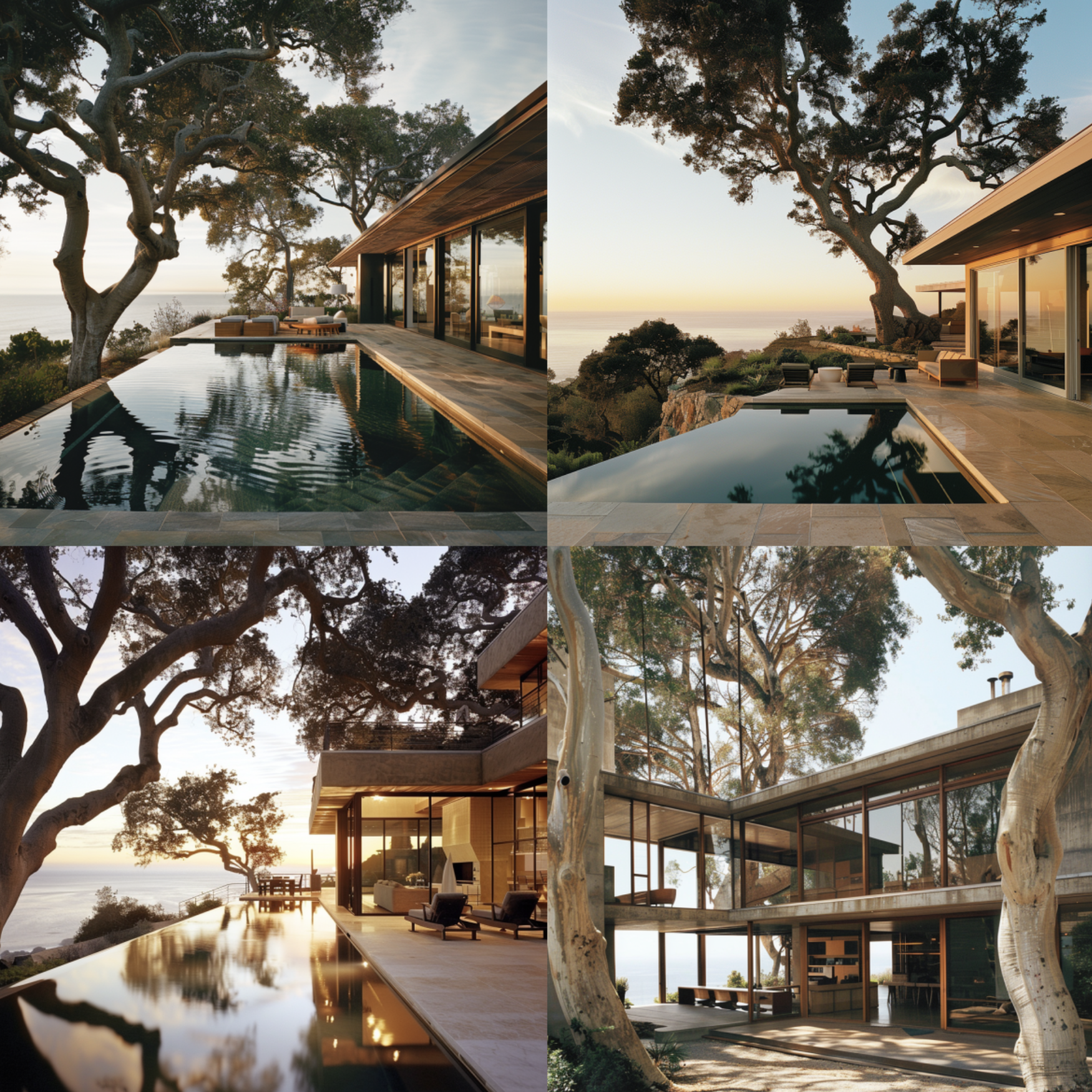Designing With AI
Artificial Intelligence has been a topic of discussion in many industries lately. A specific program called MidJourney has popped up in my seminars, newsfeeds, and social media doom-scrolling over the past few months as a new go-to for designers, so you better believe I had to try it. This post is about my recent exploration of MidJourney, highlighting my thoughts on the program and how it could be integrated into a design process.
Getting Started with MidJourney
Admittedly, the Discord server and its interface had me thinking I signed up for the wrong program. When I first logged in, I closed it thinking it was a virus. The second time I went in I subscribed, and left thinking it was a chaotic interface targeting people adept in coding, which unfortunately is not me. However, as cliche as it is, the third time was the charm. I went back in a few weeks later with the assistance of a few blogs walking me through the prompts. Once you’re in the right place, it’s as easy as typing /imagine and painting a picture with your words.
Here are some of my favorite images generated and the associated prompts.
/imagine (Prompt:) an earthy, contemporary home located off the coast of southern California with large views towards the ocean and large trees outside the residence. - @ESTATE (fast)
This image reminded me of the homes in Beverly Hills and the views available on the cliff sides. The trees seemed location-appropriate and the tones of the homes captured the pallet I was going for. I mean who doesn’t love an infinity edge?
Here was another:
/imagine (Prompt:) Cafe area of a classical atelier school. There is classical art on display and ceramic statue castings on the wall. The floor plan is flexible. There is an elevated light cupola in the middle of the ceiling with clerestories - @ESTATE (fast)
These images were created to graphically represent a vision I had for a local art academy, the Miano Academy of Art. When meeting with the staff earlier this year, we discussed dreams to provide the school with a new building. A proper space for the abundance of talent within their walls. Having gathered inspiration images, and imagined how those could merge with massing and programming studies, the software created a way for me to turn intentions into one-of-a-kind inspiration images. After about 14 iterations, each generating 4 images as seen in the photos, I came out with 2 main schemes for the academy, each with 3 photos representing something similar to what I had in mind. The image on the top left was the one presented for the cafe area in the classically themed schema.
That being said, there were some wild cards in the batch. These moments had me questioning my communication skills, and thinking.. that is not at all what I had in mind. Concerning the Art Academy shots, the first few versions of the director’s studio are where these monstrosities started to take place.
/imagine (Prompt:) A zoom and recording studio in a glass cube by an art academy. The cube is also the director's private studio. He uses the studio for classical art and slip-casting ceramic faces - @ESTATE (fast)
So how can this software be integrated into a design process?
Not only did I find the process entertaining, but also enjoyed that each prompt gave me 4 iterations. In my design process, I could see these images complimenting an inspiration package. The following would need to be established beforehand to make them relevant: The program and scope, the site (which has implications on materiality, construction methods, building forms, and the backdrops available), and how a client intends to interact with a space.
The information described above could be used as inputs for the shots, and give the client a very quick taste of what it seems like they said they wanted. This does not mean that they are by any means accurate representations, but it does allow for inspiration images to exist for things that have not yet been documented online and are being discussed in pre-design. One disclaimer that would always need to come with these fantasy images is that they are not images of spaces that have been successfully created under similar constraints in a similar economy.. but the same can be said for shots pulled from my favorite design magazines such as Dezeen or ArchDaily if the works they feature were not created in the same town as the project. Inspiration is just that, inspiration. The relevance, appropriateness, and applicability of the elements are up to the design team to navigate. Translations of a compelling sentiment into a local design language can lead a designer to a unique study that may not have occurred without the proper catalyst.
What I think could make the program more effective..
When pulling images from the bot, there were often some surprises. For example, a random shutter on a column or what looked like a concrete robo-arm on a modern building. The interface has an edit tool however it seemed to make my images worse and often just blurred the portion of the image highlighted. On this note, another groundbreaking technological advance our industry now has at its fingertips is the AI integration Adobe has used to enhance Photoshop, and its Image-generating technology, “FireFly”. A designer is now able to highlight a portion of a photo and have Adobe AI add in whatever they describe. With Adobe, the results are often hyper-realistic and seamless. If MidJourney and Adobe Firefly were to come together, the result would be far superior to the two programs as they stand now.



